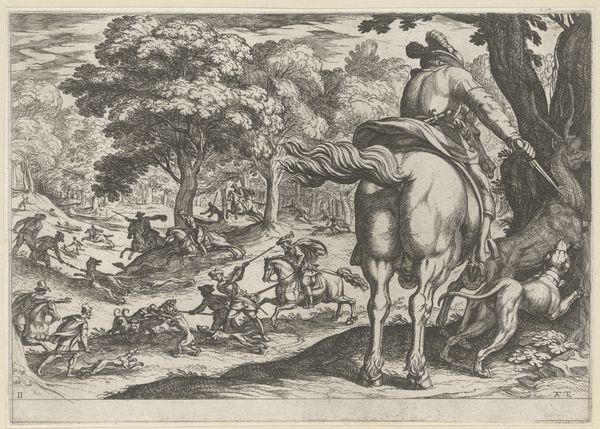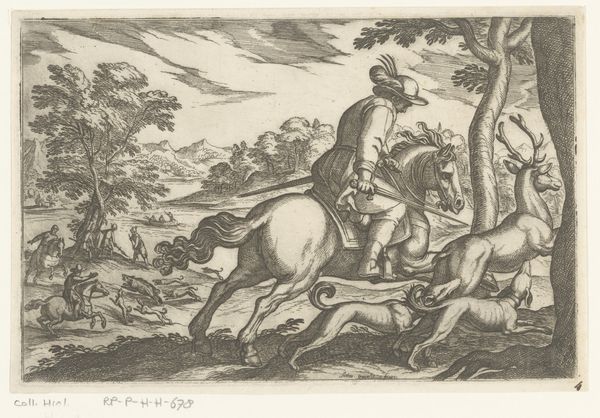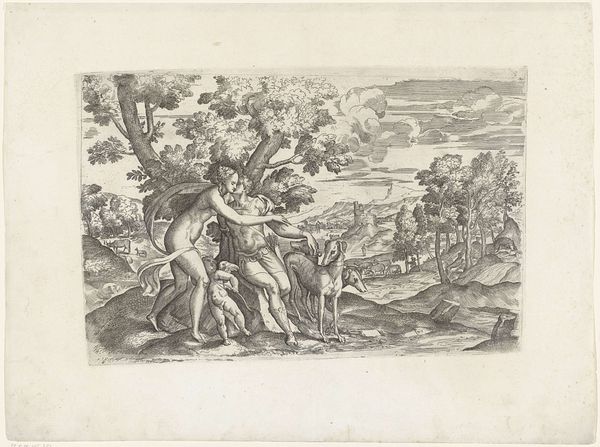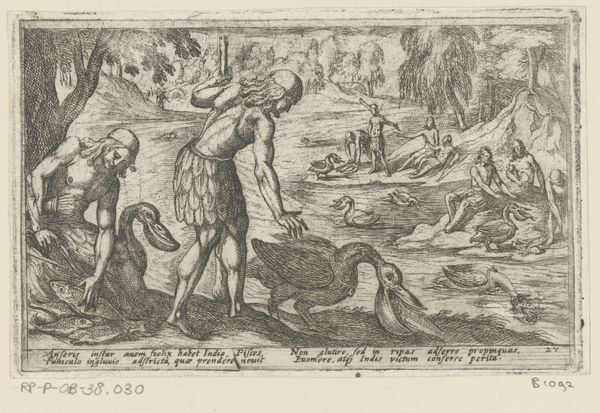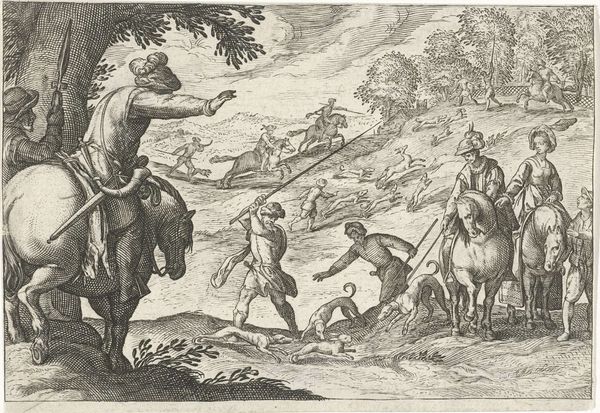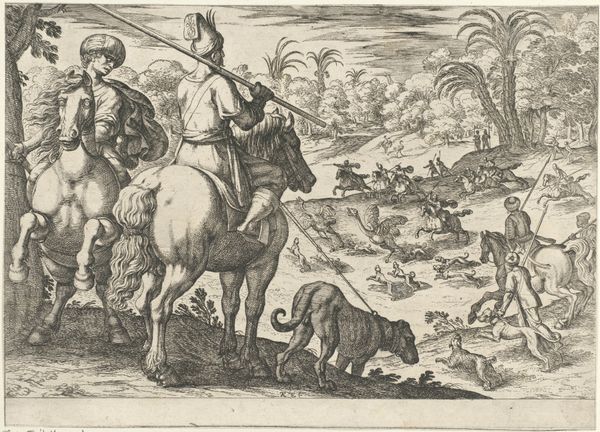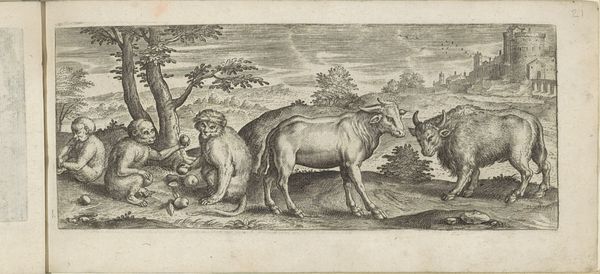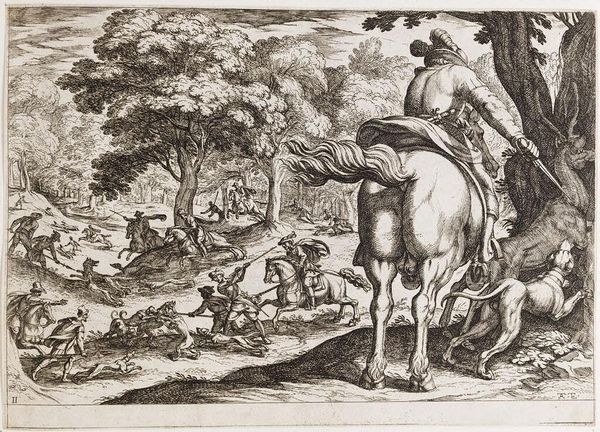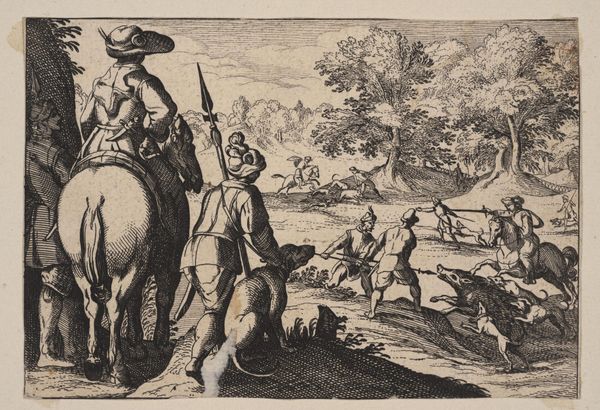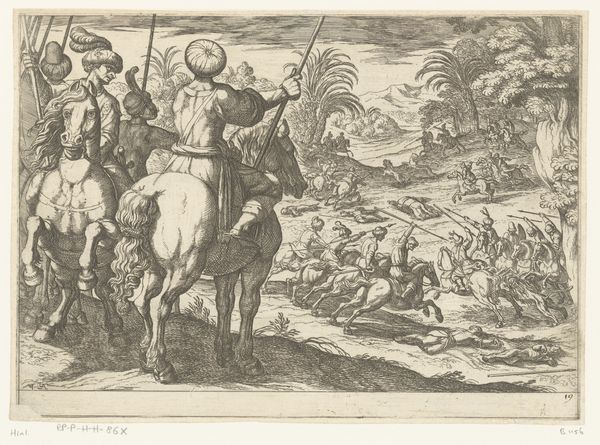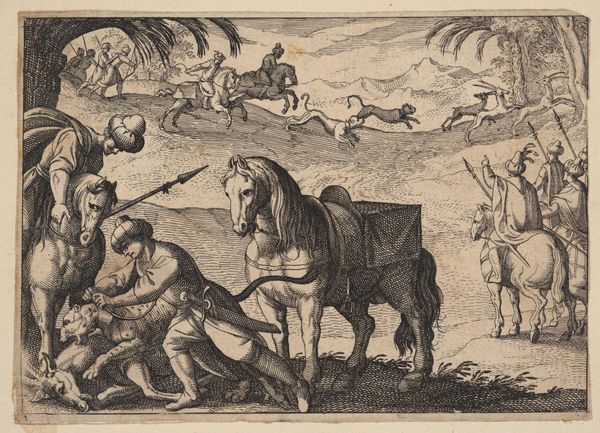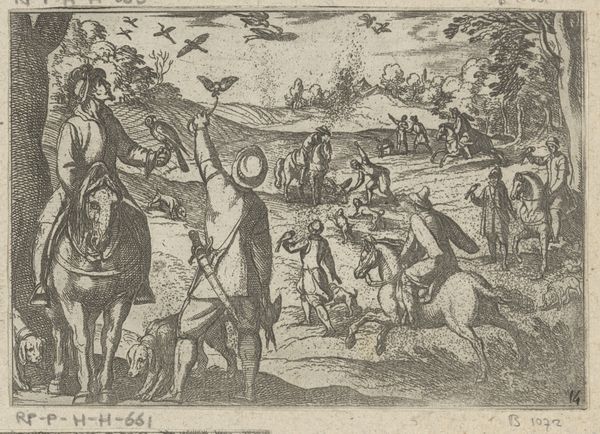
print, engraving
#
baroque
# print
#
old engraving style
#
landscape
#
figuration
#
line
#
genre-painting
#
history-painting
#
engraving
Dimensions: height 93 mm, width 121 mm
Copyright: Rijks Museum: Open Domain
Curator: Here we have a work from 1624, Jacht op een zwijn, or Boar Hunt, made in engraving on paper. It's currently held at the Rijksmuseum. Editor: What strikes me first is the dynamism, despite the static nature of the print. The eye is drawn through the frenetic energy of the hunt. Curator: Precisely. The artist has utilized strong diagonal lines to convey movement and the layered composition pulls the viewer's eye into the depths of the scene. Note the meticulous detailing of each figure, particularly the musculature of the horses and the bristling hair of the boars. Editor: The boar itself, central to the action, becomes a complex symbol. Representing both danger and sustenance, linking it directly to man's primal nature and need to dominate nature. The hunt as metaphor for survival is a strong one. Curator: A key feature is the contrasting light and shadow, defining form and also creating a dramatic sense. Consider how the foreground figures are more strongly defined than the background, establishing depth. The balance of light and dark enlivens the two-dimensional picture plane, doesn't it? Editor: Absolutely. The symbolism also lies within the figures of the hunters; they represent man in control. While it may initially seem an innocuous hunting scene, you begin to notice the deeper implications for both nature and cultural attitudes regarding dominance of man versus nature. Curator: And this contrast in value isn’t arbitrary. It also enhances the clarity and legibility of the scene. Without these distinctions, all that detail would become just a confusing mass. Editor: Well, the lasting value is found in the way it marries the thrilling activity of the hunt to humanity's historical and continued struggles and needs for dominance. Curator: Ultimately, the artwork successfully utilizes fundamental principles such as line, tone, and form to articulate spatial depth and motion. The anonymous artist uses pictorial mechanics with precision to give order to chaotic imagery. Editor: I find it quite interesting that you point out those compositional choices as a successful strategy to represent the tension between safety and mortal peril. It allows a rather primitive concept, like the need for the domination of the natural world, to come into question.
Comments
No comments
Be the first to comment and join the conversation on the ultimate creative platform.
